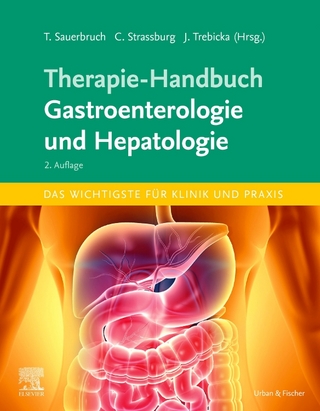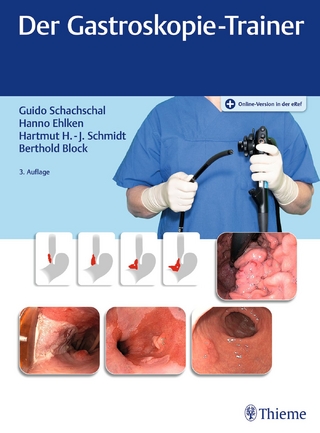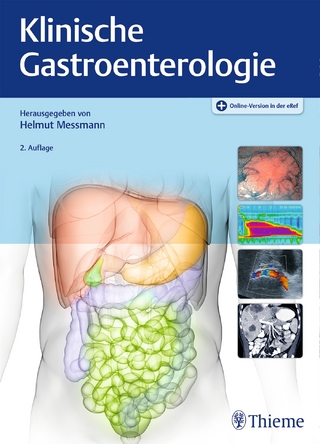
Medical Aspects of Dietary Fiber
Kluwer Academic/Plenum Publishers (Verlag)
978-0-306-40507-5 (ISBN)
- Titel ist leider vergriffen;
keine Neuauflage - Artikel merken
Burkitt revived a scientific interest in fiber and the possible connection between diet. constipation, and many physical disorders by observing the vol- ume and frequency of stools on an African diet and on an English diet.
1. Effect of Fiber on Colon Function.- I. Introduction.- II. Physicochemical Effects of Fiber.- A. Water-Holding Capacity.- B. Determinants of Stool Weight.- C. Cation-Exchange Properties.- D. Adsorption and Excretion of Bile Acids.- E. Fecal Bile Acids and Neutral Sterols.- F. Matrix Formation.- G. Effect of Fiber on Bacteria.- III. Metabolism of Dietary Fiber in the Colon.- IV. Effect of Dietary Fiber Metabolism on Colon function.- V. Effect of Fiber on Stool Weight.- A. Normal Fecal Weight.- B. Addition of Wheat Bran to the Diet.- C. Addition of Fruit and Vegetables to the Diet.- VI. Summary.- References.- 2. The Measurement of Intestinal Transit Time.- I. Introduction.- II. Physiological Relationships.- III. Methods of Measuring Gastrointestinal Transit.- A. Gastric Emptying Time.- B. Small-Intestinal Transit Time.- C. Cecal Residence Time.- D. Total or Transintestinal Transit Time.- E. Modification by Fiber.- F. Colonic Transit Time.- G. Differential Colonic Transit Time.- H. Mean Transit Time.- IV. Transit in Relation to Other Functions.- A. Relation to Pressure.- B. Relation to Fecal Weight.- C. Hormonal and Metabolic Influences.- D. Changes in Colonic Disease.- V. Conclusions.- References.- 3. Dietary Fiber in Diverticular Disease of the Colon.- I. Introduction.- II. Fiber Intake and the Prevalence of Diverticular Disease.- A. Geographical Distribution.- B. Historical Changes in Prevalence.- C. Comparisons between Individuals in a Single Community.- III. Diverticular Disease: Pathogenesis and the Effect of Fiber.- A. Pathogenesis.- B. Effects of Dietary Fiber on the Normal Colon.- C. Dietary Fiber Depletion.- IV. Fiber Depletion Studies in Animals.- V. Treatment of Diverticular Disease with Dietary Fiber.- A. Treating Symptoms.- B. Preventing Complications.- VI. Conclusions.- References.- 4. Effects of Dietary Fiber on the Structure and Function of the Small Intestine.- I. Introduction.- II. Dietary Effects on Small-Bowel Structure.- III. Dietary Effects on Small-Bowel Microbiology.- IV. Relationship between Intestinal Flora and Mucosal Structure and Function.- V. Summary.- References.- 5. Colon Cancer: The Emergence of a Concept.- I. Epidemiological Features.- A. Worldwide Distribution.- B. Pathological Relationships.- C. Conclusions from Epidemiological Evidence.- II. The High-Fat, Low-Fiber Hypothesis.- A. Consistency of the Hypothesis with Epidemiological Evidence.- B. Practical Considerations.- References.- 6. Experimental Animal Studies in Colonic Carcinogenesis and Dietary Fiber.- I. Introduction.- II. General Concepts and Rationale.- III. Experimental Colonic Neoplasia: The Model.- A. Background.- B. Chemically Induced and Spontaneous Neoplasia.- C. Metabolism and Action of Hydrazines.- D. Potential Relevance of Hydrazines to Humans.- E. Biological Aspects of Experimental Intestinal Neoplasia.- F. Summary of the Model System.- IV. Studies with Dietary Fiber in Experimental Colonic Neoplasia.- A. Background.- B. Studies with Mixtures of Individual Fiber Polymers.- C. Studies Examining Single Fibers.- V. Future Directions and Mechanisms of Fiber Action.- A. Background and Physiochemical Properties of Fiber Polymers.- B. Water-Holding Capacities of Fiber.- C. Fiber Adsorption of Organic and Inorganic Compounds.- D. Fiber and Intestinal Transit.- E. Fiber and Bile-Acid Metabolism.- F. Fiber and Intestinal Microflora.- G. Fiber in Anticarcinogenesis.- VI. Conclusion.- References.- 7. Epidemiology of Colon Cancer: Fiber, Fats, Fallacies, and Facts.- I. Introduction.- II. Disease Distribution.- A. Migrant Populations.- B. Etiology.- III. Correlational Studies.- IV. Case-Control Studies.- A. The Working Model-A "Jigsaw Puzzle".- B. Prospects.- References.- 8. Dietary Fiber and Lipid Metabolism: An Update.- I. Introduction.- II. Working Hypothesis.- III. Evaluation of Hypothesis.- A. Adsorption of Bile Acids and Salts.- B. Lipid Metabolism.- C. Other Possible Mechanisms.- D. Effects on Experimental Atherosclerosis.- V. Conclusions.- References.- 9. Dietary Fiber: Effects on Plasma and Biliary Lipids in Man.- I. Introduction.- II. Epidemiological Studies.- A. Non-Westernized Populations.- B. Western Populations.- III. Clinical Studies.- A. Plasma Lipids and Lipoproteins.- B. Effects of Dietary Fiber on Bile Composition in Man.- IV. Mechanisms.- A. Displacement of Saturated Fat, Cholesterol.- B. Energy Balance, Nutrient Absorption.- C. Cholesterol Absorption and Fecal Steriod Excretion.- D. Other Mechanisms.- V. Clinical Significance of Dietary Fibers.- A. Pharmacological Applications.- B. Dietary Significance.- References.- 10. Dietary Fiber and Carbohydrate Metabolism.- I. Introduction.- II. Dietary Fiber and Carbohydrate Tolerance Tests.- III. Fiber Foods and Fiber Pharmacology.- IV. Mechanisms of Action of Fiber in Relation to Carbohydrate Metabolism.- A. Importance of Viscosity.- B. Reduction of Insulin Response.- C. Slow Absorption Rather Than Malabsorption.- D. Gastric Emptying and Small-Intestinal Absorption.- E. Rate Phenomenon.- V. Prerequisites for Maximum Effectiveness.- A. High-Starch Diets.- B. Intimate Mixing with Carbohydrate Foods.- VI. General Considerations.- A. Effect of One Fiber Meal on the Next.- B. Long-Term Effect of Dietary Fiber.- VII. Conclusion.- References.- 11. Dietary Fiber and Diabetes.- I. Introduction.- A. Therapeutic Potential of Dietary Fiber.- B. Dietary Fiber and the Prevalence of Diabetes.- II. Short-Term Effects of Fiber.- A. Fiber Supplements.- B. High-Fiber Diets.- III. Long-Term Effects of Fiber.- A. Fiber Supplements.- B. High-Fiber Diets.- IV. Proposed Mechanisms.- A. Glucose Metabolism.- B. Lipid Metabolism.- V. Therapeutic Use of High-Fiber Diets.- A. Diabetes Mellitus.- B. Reactive Hypoglycemia.- C. Hypercholesterolemia.- D. Hypertriglyceridemia.- VI. Conclusions.- References.- 12. Food Intake Regulation and Fiber.- I. Introduction.- II. Work and Rate of Ingestion.- III. Energy Density.- IV. Satiety.- V. Long-Term Studies.- VI. Insulin Release and the Rate and Site of Nutrient Absorption.- VII. Fecal Energy Loss.- VIII. Epidemiological Evidence.- IX. Animal Obesity.- X. Palatability.- A. Special Note on Sugar.- B. Sugar and Obesity.- XI. Fiber and Treatment of Obesity.- XII. Summary.- References.- 13. Dietary Fiber and Mineral Absorption.- I. Introduction.- II. Calcium Absorption and Calcium Balance.- A. The Role of Phytate.- B. Calcium Binding by Dietary Fiber.- C. Calcium Absorption from the Colon.- D. Fiber-Rich Diets and Bone Disease in At-Risk Groups.- III. Dietary Fiber and Zinc Status.- IV. Dietary Fiber and Iron Absorption.- V. Conclusions.- References.- 14. Sources and Intakes of Dietary Fiber in Man.- I. Introduction.- A. Problems of Food Intake Assessment.- B. Problems in Dietary Fiber Analysis.- II. Fiber Intakes and Sources.- A. United Kingdom.- B. Europe.- C. Africa.- D. India.- E. United States.- III. Long-Term Trends in Fiber Intake.- A. United Kingdom..- B. United States.- IV. Effects of Social Class.- V. Seasonal Variation.- VI. Individual Variation.- A. Sex.- B. Age.- C. Other Factors.- VII. Conclusions.- References.
| Zusatzinfo | 16 black & white illustrations, biography |
|---|---|
| Sprache | englisch |
| Gewicht | 560 g |
| Themenwelt | Medizin / Pharmazie ► Gesundheitsfachberufe ► Diätassistenz / Ernährungsberatung |
| Medizinische Fachgebiete ► Innere Medizin ► Gastroenterologie | |
| ISBN-10 | 0-306-40507-5 / 0306405075 |
| ISBN-13 | 978-0-306-40507-5 / 9780306405075 |
| Zustand | Neuware |
| Haben Sie eine Frage zum Produkt? |
aus dem Bereich


